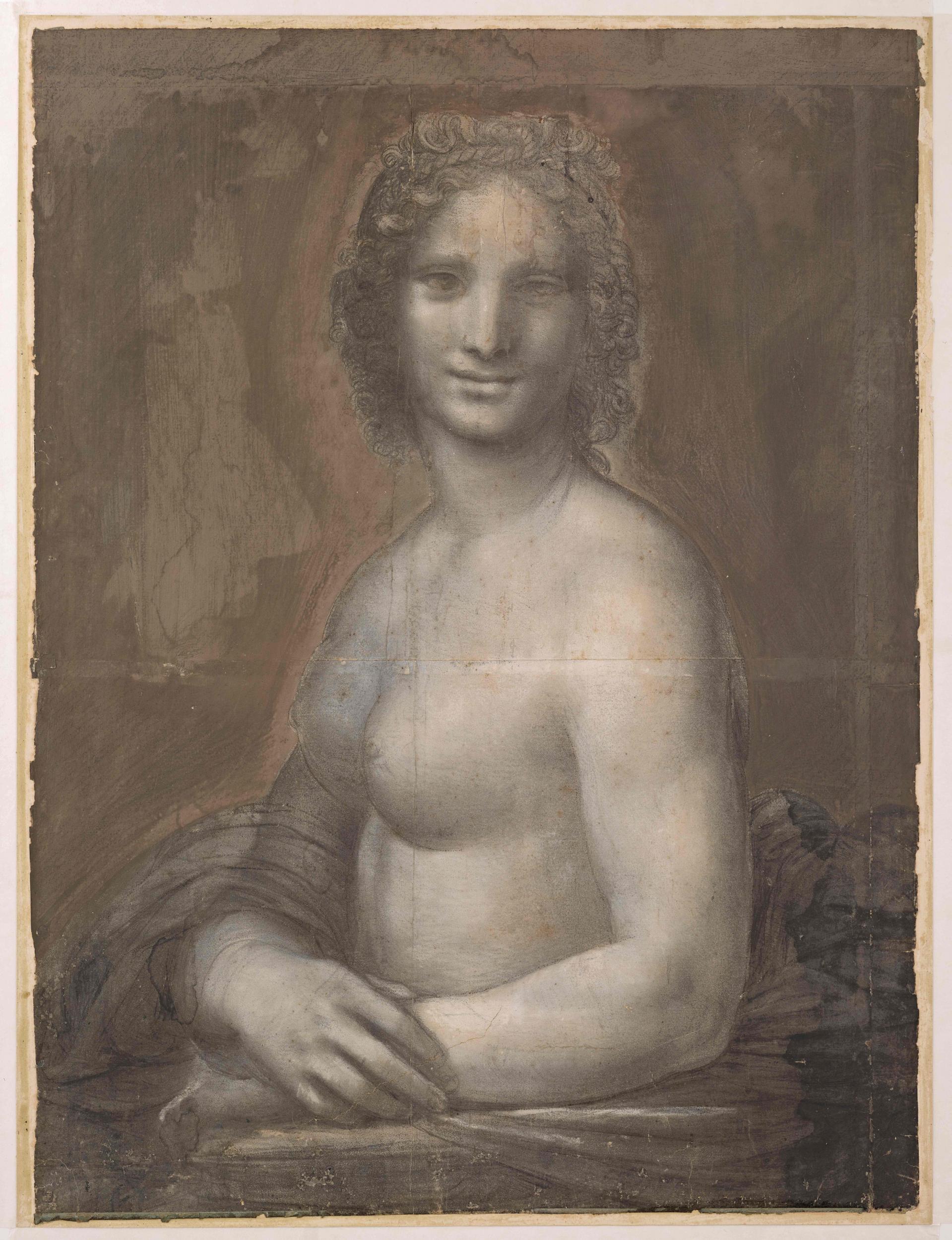Nude ‘Mona Lisa’ painting may be by Leonardo da Vinci, says Louvre
New analysis reveals sketch – believed to be a preparatory work for a painting – was largely done by left handed artist, indicating the master himself could be behind it

Your support helps us to tell the story
From reproductive rights to climate change to Big Tech, The Independent is on the ground when the story is developing. Whether it's investigating the financials of Elon Musk's pro-Trump PAC or producing our latest documentary, 'The A Word', which shines a light on the American women fighting for reproductive rights, we know how important it is to parse out the facts from the messaging.
At such a critical moment in US history, we need reporters on the ground. Your donation allows us to keep sending journalists to speak to both sides of the story.
The Independent is trusted by Americans across the entire political spectrum. And unlike many other quality news outlets, we choose not to lock Americans out of our reporting and analysis with paywalls. We believe quality journalism should be available to everyone, paid for by those who can afford it.
Your support makes all the difference.A drawing bearing a striking resemblance to the Mona Lisa, which has long been attributed to Leonardo da Vinci’s studio – may be by the master himself, experts at the Louvre museum in Paris have said.
The charcoal drawing of a sideways-on semi-nude woman smiling is known as the Monna Vanna and had previously been thought to be by another artist working at the same time as Leonardo.
The hands and body are in almost identical positions to those seen in the Mona Lisa, and recent re-examination by historians and scientific experts means the work may have to be reclassified.
The sketch is believed to be a preparatory drawing for an oil painting and was not previously thought to be by Leonardo due to the presence of details done by a right-handed person. Leonardo is among the world’s most famous left-handed artists.
However, the re-examination revealed large amounts of the work were in fact done by someone left-handed.
“There is a very strong possibility that Leonardo did most of the drawing,” Mathieu Deldicque, a curator at the Louvre told news agency AFP.
“It is a work of very great quality done by a great artist,” he said.
Mr Deldicque led the investigation over several months, overseeing historians and specialists at the renowned C2RMF (Centre for Research and Restoration of the Museums of France) laboratory under the Louvre.
“It is almost certainly a preparatory work for an oil painting,” Mr Deldicque said.
Microscopic examinations show the sketch was drawn from the top left towards the bottom right, Mr Deldicque said, which points to a left-handed artist.
In addition techniques known to have been favoured by Leonardo are in evidence, including “sfumato” – the fine shading of tones to soften outlines and produce a slightly out of focus effect.
When the painting was first re-examined in 2017, Mr Deldicque suggested the sketch may even be of Lisa Gherardini, the same woman the Mona Lisa is believed to portray.
In addition to the similar composition and the position of the hands, other clues linking the two paintings are small holes on the canvas suggesting it may have been traced onto another canvas.

Another art expert, Bruno Mottin – the Louvre’s conservation expert – confirmed in 2017 the sketch dates from da Vinci’s lifespan and was of “very high quality”.
But Mr Deldicque ruled out the possibility of 100 per cent certainty of it being by Leonardo.
“We want to be serious and scientific about this,” he said this week. “The quality of the drawing, both to the naked eye and under imaging analysis” shows the work of an exceptional hand.
But experts cannot be “absolutely certain (it was by Leonardo) and we may never be,” he admitted.
The painting will be displayed at the Château de Chantilly, north of Paris, from 1 June to 6 October this year. The exhibition will mark the 500th anniversary of the death of Leonardo who was born in the Medici-ruled Republic of Florence in 1452 and died in France in 1519.
There is good reason for caution in attributing the sketch to Leonardo.
The last painting to be attributed to him, the Salvator Mundi, depicting Christ, was confirmed by experts as a genuine Leonardo in 2011 and sold for $450m (£340m) in 2017. Auction house Christie’s confirmed the Abu Dhabi Department of Culture and Tourism had taken possession of it.
The Louvre Abu Dhabi was due to unveil the painting in September 2018, but it was cancelled with no explanation. Many experts have questioned aspects of the painting’s authenticity.
The New York Times, citing FBI files, identified the buyer as the Saudi prince Bader bin Abdullah, who had reportedly been acting as a proxy for the crown prince Mohammed bin Salman.
Last month it was reported the Louvre in Paris wanted to borrow the Salvator Mundi for a Leonardo exhibition in Paris, but had not heard from “the owner”.
“Nobody outside the immediate Arab hierarchy knows where it is,” Professor Martin Kemp, a Leonardo scholar who first saw the painting in 2008 and helped to “authenticate” it, told The Times in November last year.
Join our commenting forum
Join thought-provoking conversations, follow other Independent readers and see their replies
Comments